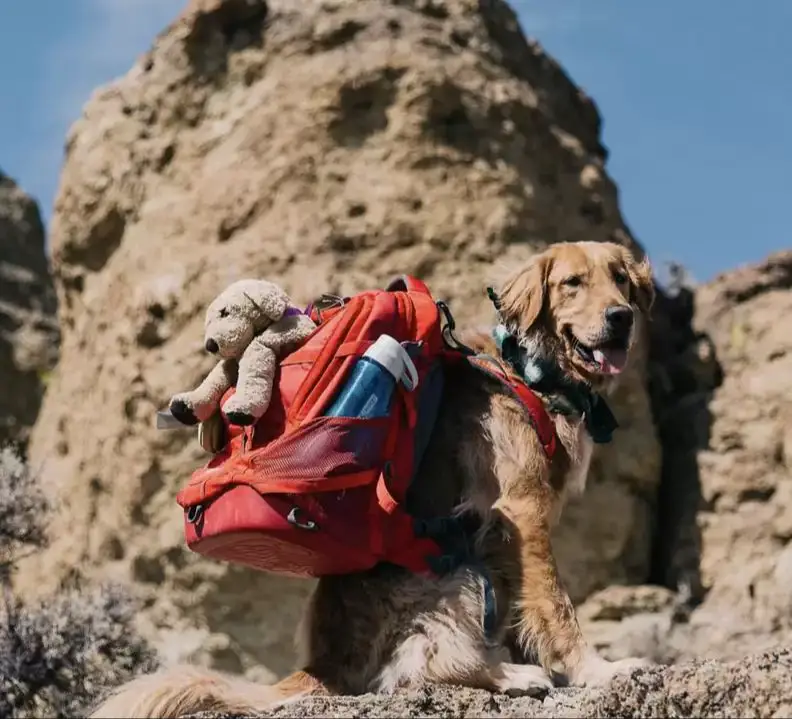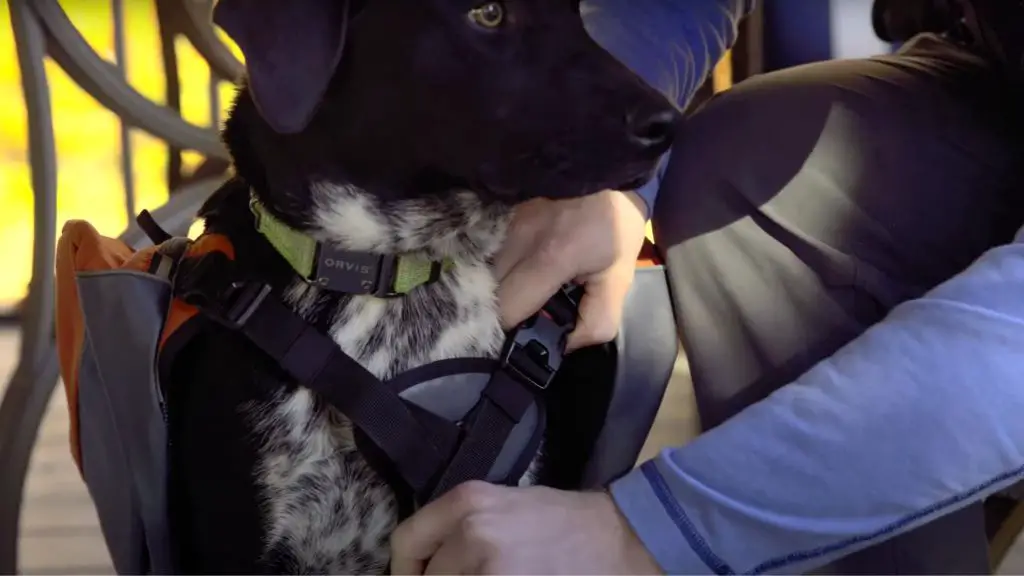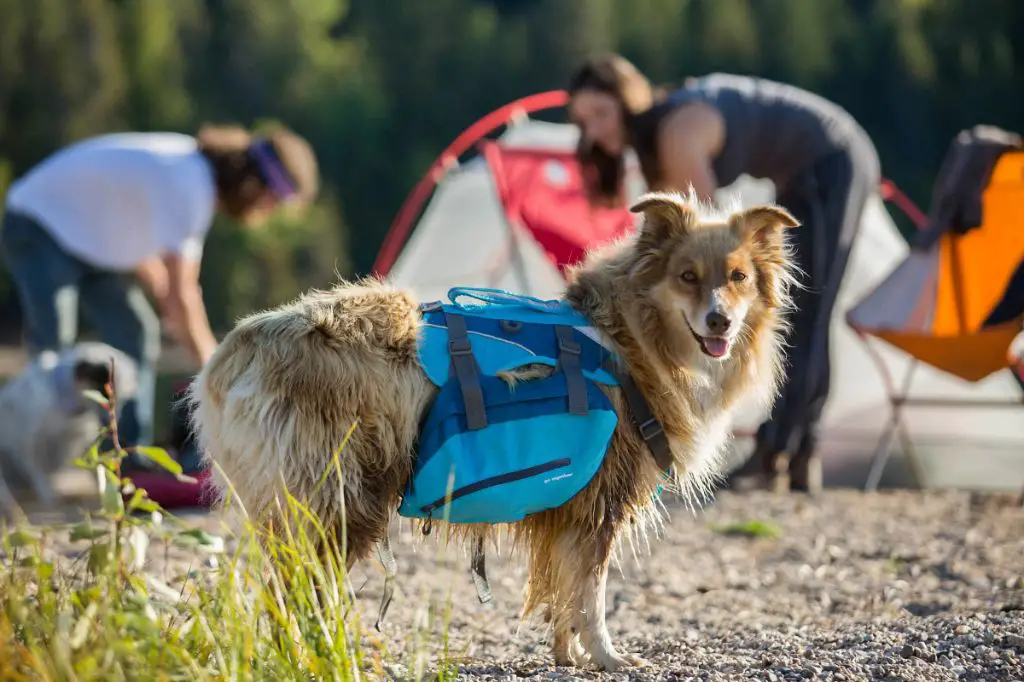Introduction
Dogs have been working animals alongside humans for centuries, performing jobs like herding, hunting, and pulling sleds. More recently, dogs have taken on the role of hiking and adventure companion. Wearing a backpack or doggy saddlebag allows dogs to carry supplies and contribute to the workout. Determining when a puppy is ready to start wearing a weighted pack requires monitoring key aspects of development. This article will cover the physical maturity, strength training, backpack features, and other considerations for outfitting a dog with a backpack for the first time.
Physical Development
Dogs’ bones, muscles, and joints go through important developmental phases in the first 18 months of life. Most large and giant breed dogs are still growing and developing up until age 18-24 months. During this time, their bones, muscles, and joints are not fully formed and need care to develop properly. Carrying any significant weight could put undue stress on the still developing skeletal system.
Smaller dogs generally reach skeletal maturity faster, around 12-15 months old. Their growth plates close earlier than large breeds, meaning their bones are done growing and are hardened. At this point, their bones, muscles and joints can start carrying some weight without damage. However, you still want to be cautious with backpack use until at least 18 months old.
Regardless of breed, a dog’s muscle tone and joint health also factor into when they are ready for a weighted backpack. Weak muscles or joint issues could indicate waiting longer before adding weighted activity. Consult with your veterinarian if you have any concerns.
Starting Weight
When first beginning to use a backpack on your dog, it is important to start with minimal or no weight in the pack. The amount of weight a dog can comfortably carry depends on factors like the dog’s breed, size, age, and conditioning level.
For smaller dogs or puppies under 1 year old, it’s best to start with an empty backpack or just a very light load like a water bottle. Toy breeds and small dogs under 30lbs should not carry more than 10% of their body weight.

Medium or large breed puppies up to 18 months can start with 5-10% of their weight. Adult dogs can carry up to 25% of their body weight in a backpack, but it’s best to start light. An empty pack still provides sensory input and gets the dog accustomed to wearing one. Build up weight gradually over several weeks as conditioning improves.
The breed of dog also matters – muscular working breeds like Labrador Retrievers can safely carry more relative weight, while lanky sighthounds are better suited to lighter loads. Knowing your dog’s limits and building up weight slowly is key to preventing injury.
Training
Getting a dog used to comfortably wearing a backpack requires patience and proper training techniques. Don’t just put a loaded pack on your dog and head out for a long hike. Instead, take the time to gradually acclimate your dog to the backpack.
Start by having your dog wear an empty backpack around the house and yard. Let them explore wearing it for short 10-15 minute sessions. Give them praise and treats for leaving the pack on. Once they seem comfortable wearing an empty pack, add just a light item or two and repeat the short indoor training sessions.
Slowly increase the weight and length of time wearing the pack over a period of 2-4 weeks. Monitor for any signs of chafe marks or irritation. Take occasional breaks during training sessions to check the fit. Ensure proper adjustment of all straps for a secure, centered fit on their back without restricting shoulder movement.
On the first few real hikes, keep the backpack weight minimal. Bring plenty of water and rest breaks to condition your dog to longer distances. Keep an eye out for any signs of discomfort or fatigue. With patience and proper conditioning, your dog will be comfortably trekking the trails in their backpack.
Integrating into Exercise
Backpack walks should be integrated gradually into your dog’s regular exercise routine. Start with short 10-15 minute walks once or twice a week, and slowly increase the duration and frequency from there. Here are some tips for integrating backpack walks:
- Don’t have your dog wear a loaded pack on every walk. Mix up backpack walks with regular walks to prevent soreness or strain.
- Begin walks on flat terrain before trying more challenging hikes.
- Bring plenty of water and take rest breaks. Pups tire out more quickly carrying a load.
- Pay attention to signs of fatigue like lagging behind or panting heavily. Take the backpack off if your dog seems overtired.
- Alternate the side the pack is worn on to distribute weight evenly and prevent muscle imbalances.
- Reduce the distance/duration during very hot or cold weather to prevent overheating or chill.
- Limit a puppy’s backpack walks until growth plates have closed, around 12-18 months.

With patience and proper conditioning, backpack walks can become a rewarding form of exercise for your dog!
Signs of Overexertion
Overexertion and improper backpack use can lead to injuries and other health issues in dogs. Here are some signs to watch out for:
Fatigue: Excessive panting, needing to stop and rest frequently, reluctance to keep walking.
Lameness: Limping, holding a leg up, bunny hopping, pain when limbs are touched or manipulated.
Soreness: Whining or crying when touched along the back, spine, or neck. May also act overly sensitive in these areas.
Change in Gait: Altered movement, stiff or shortened stride, weakness climbing stairs or jumping.
Nerve Damage: Dragging paws, scrapping nails, inability to feel sensations in limbs.
Joint Issues: Swelling, inflammation, or fluid buildup around joints. Difficulty laying down or getting up.
Spinal Damage: Hunched posture, arched back, reluctance to turn head or change positions.
Pay close attention to these signs of discomfort in your dog while using a backpack. Reduce weight and break time if needed to prevent long term health consequences.
Backpack Features
When choosing a backpack for your dog to wear, there are a few key features to look for that will ensure proper fit, comfort, and safety:
Adjustable Straps
It’s important that the backpack has adjustable straps across the chest and belly so you can customize the fit for your dog. The straps should be padded for comfort. Make sure to measure your dog and follow sizing guidelines when selecting a pack.
Padding

Padding along the straps and back panel will help prevent chafing or irritation. Breathable mesh panels can also help keep your dog cool during hikes.
Durable Material
Look for backpacks made of rugged, tear-resistant materials like nylon or polyester. The pack should be able to withstand the elements and not sag or droop when loaded.
Reflectors
For visibility during early morning or evening walks, choose a pack with reflective strips or patches. This helps keep your dog safe when near roads.
Distribution of Weight
Make sure any items in the backpack are evenly distributed and centered on your dog’s back. Avoid loading too much weight in one compartment. Evenly dispersed weight is safer and more comfortable.
Activities
Backpacking with your dog opens up many possibilities for fun outdoor adventures. Here are some great activities and environments to consider when bringing Fido along in his backpack:
Hiking – Start with easy to moderate trails without much elevation gain as you both build endurance. Make sure to bring plenty of water and rest/cool down often.
Camping – Let your dog carry their own food, collapsible bowls, and bedding to pitch a tent for the night. Take breaks and keep the distances short when loaded down.
Beach days – Bring toys, treats, collapsible water bowls and let your dog safely splash around and enjoy the sights and smells. Keep hydrated.
Picnics in the park – Pack all your picnic essentials like blankets, toys, and water in your pup’s backpack and find a nice shady spot to relax and refuel.
Dog sport training and trials – As your dog builds strength and endurance, use a properly weighted backpack during agility, flyball, or obedience practice.
Make sure to start slowly in manageable environments as your dog learns to carry a load. Pay close attention for any signs of fatigue or discomfort. With time and positive training, backpacking with your dog can become a fun activity you both look forward to.
Benefits
There are lots of benefits to using dog backpacks both physically and mentally for your pet. Physically, carrying a backpack helps build strength, endurance and balance in your dog. The extra weight of a loaded backpack increases your dog’s exertion during exercise which helps develop muscles and improve conditioning. This is especially useful for high energy dog breeds that need an outlet for their enthusiasm.
Mentally, wearing a backpack during walks or hikes gives your dog a job to do. This provides mental stimulation as they focus on the task of carrying the load. It can also give them a sense of purpose. Additionally, using the backpack for adventures out on trails allows your dog to explore new smells and sights which is enriching for their mind.

Overall, incorporating a backpack into your dog’s exercise routine has many benefits. It provides physical and mental exercise to keep your pet fit, healthy and engaged.
Conclusion
In summary, there are a few key factors to consider when determining the optimal age for a dog to start wearing a backpack during walks and hiking:
– A dog’s musculoskeletal system is still developing during the first 12-18 months. Don’t have puppies carry any significant weight during this time.
– Smaller dog breeds reach maturity earlier than larger breeds. A good guideline is that dogs can begin training with empty packs between 6-12 months old. Monitor them closely.
– Start with short distances, 10 minutes or less, on flat terrain. Slowly increase time and distance while monitoring for signs of fatigue or soreness.
– Only add lightweight loads, up to 10% of body weight, once the dog is mature and conditioned. Increase weight gradually over 4-6 weeks.
– Properly fitted, well-designed backpacks will distribute weight evenly and minimize strain.
– Backpacks allow dogs to carry supplies and gear on hikes and adventures, promoting exercise and bonding. But be cautious not to overdo it early on.
With proper development and training, backpacks can be a fun, stimulating activity for dogs. But be sure to introduce them slowly at an appropriate age to keep your pup healthy and happy on the trail.